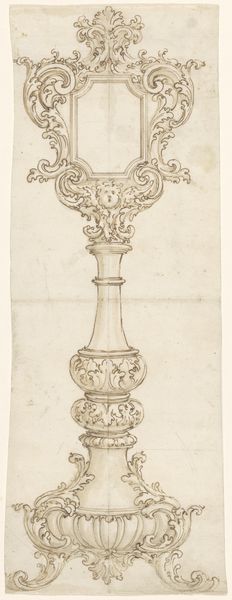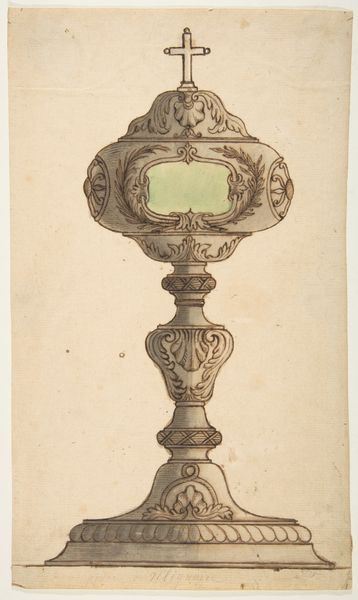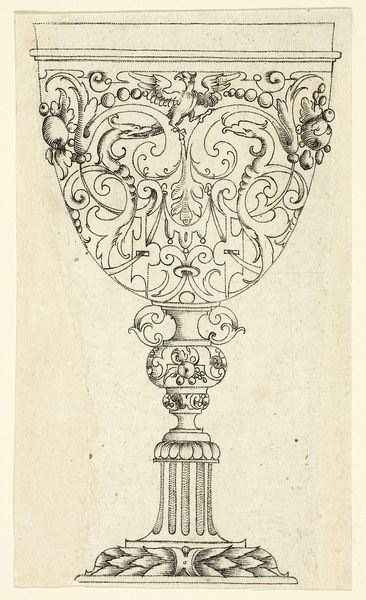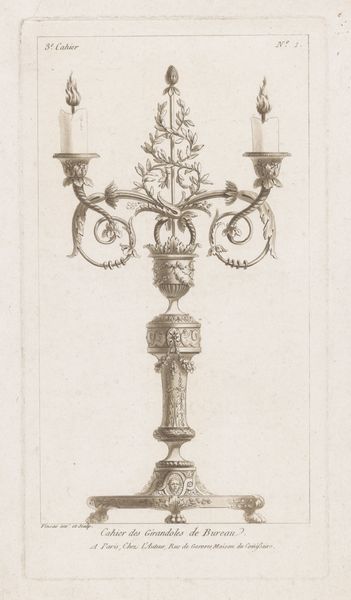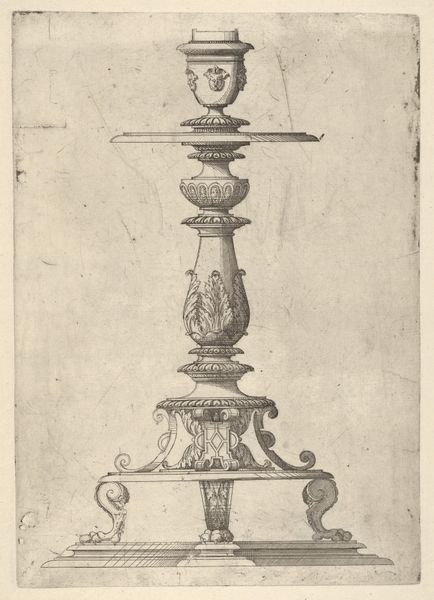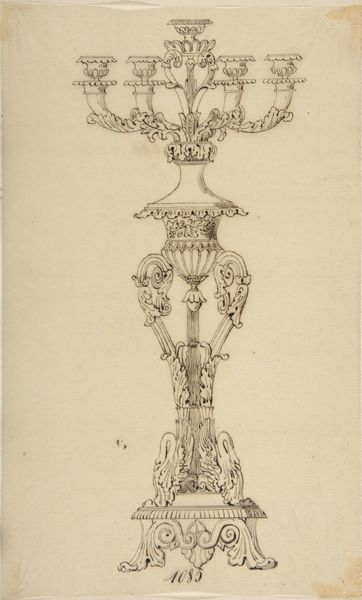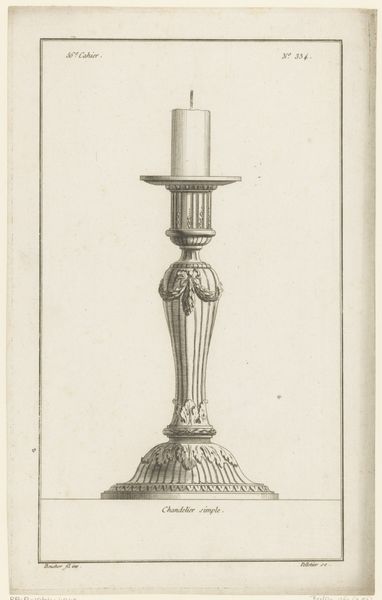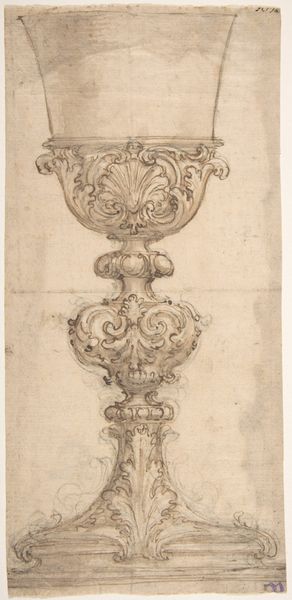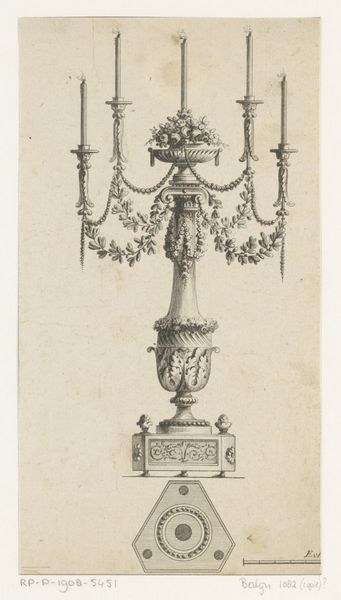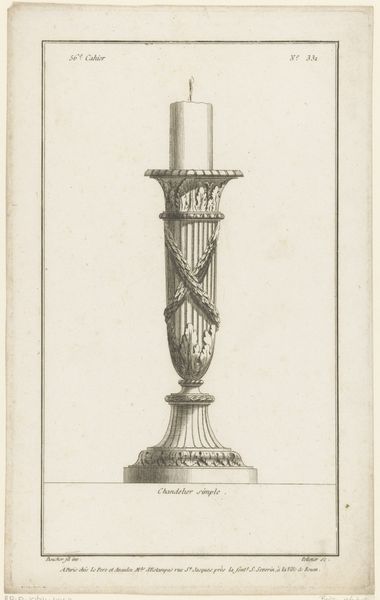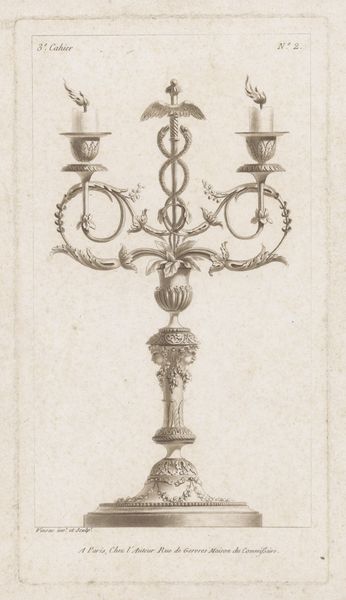
Design for Chalice with Arms of Jean-François Paul LeFevre de Caumartin, Bishop of Vannes 18th century
0:00
0:00
drawing, coloured-pencil, print, paper
#
drawing
#
coloured-pencil
#
baroque
# print
#
paper
#
coloured pencil
#
watercolor
Dimensions: sheet: 13 15/16 x 8 1/16 in. (35.4 x 20.4 cm)
Copyright: Public Domain
Curator: Here we have an 18th-century design drawing for a chalice, intended for Jean-François Paul Le Fèvre de Caumartin, the Bishop of Vannes. Editor: The lightness is striking. There's a delicacy to the line work and the pale washes of color, considering this is a design for such a monumental object. Curator: The drawing's fragility contrasts sharply with the socio-political implications. Caumartin, a Bishop, held significant power in a deeply hierarchical society. A chalice commissioned with his arms wouldn't just be a drinking vessel, but a bold proclamation of authority during mass. Editor: Observe how the artist uses line to imply the curve and sheen of metal or glass. The ribbons and garlands looping around the cup and the details on the stem exemplify the refined Baroque aesthetic. The use of watercolor and colored pencil gives it a very tangible feel. Curator: Right, and notice the prominent display of Caumartin's coat of arms at the base. The overall design embodies the self-assuredness and extravagant ornamentation of the French aristocracy. The chalice embodies the church, nobility and land ownership within France at this point. Editor: One might even see a visual metaphor in its structure. The heavy base is weighed down with heraldry and ornament to be held down whereas the cup itself appears light and uplifted. The whole piece suggests a striving for grace despite being bound by earthly concerns. Curator: Absolutely, and consider this—did the eventual realization of the chalice mirror this design exactly? What were the politics embedded within commissioning such luxury goods and services at that historical moment? Were other makers involved in realizing the final product, and if so, whose work influenced the appearance of the piece as it left the draughtsmans drawing? Editor: So true. Reflecting on the meticulous design and intended opulence invites a contemplation of faith, power, and artful creation. Curator: Indeed. Viewing the drawing through an intersectional lens—thinking about issues such as religion, governance and class—broadens our experience with the piece.
Comments
No comments
Be the first to comment and join the conversation on the ultimate creative platform.
